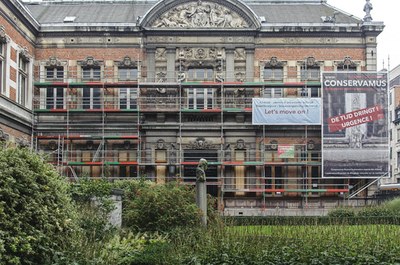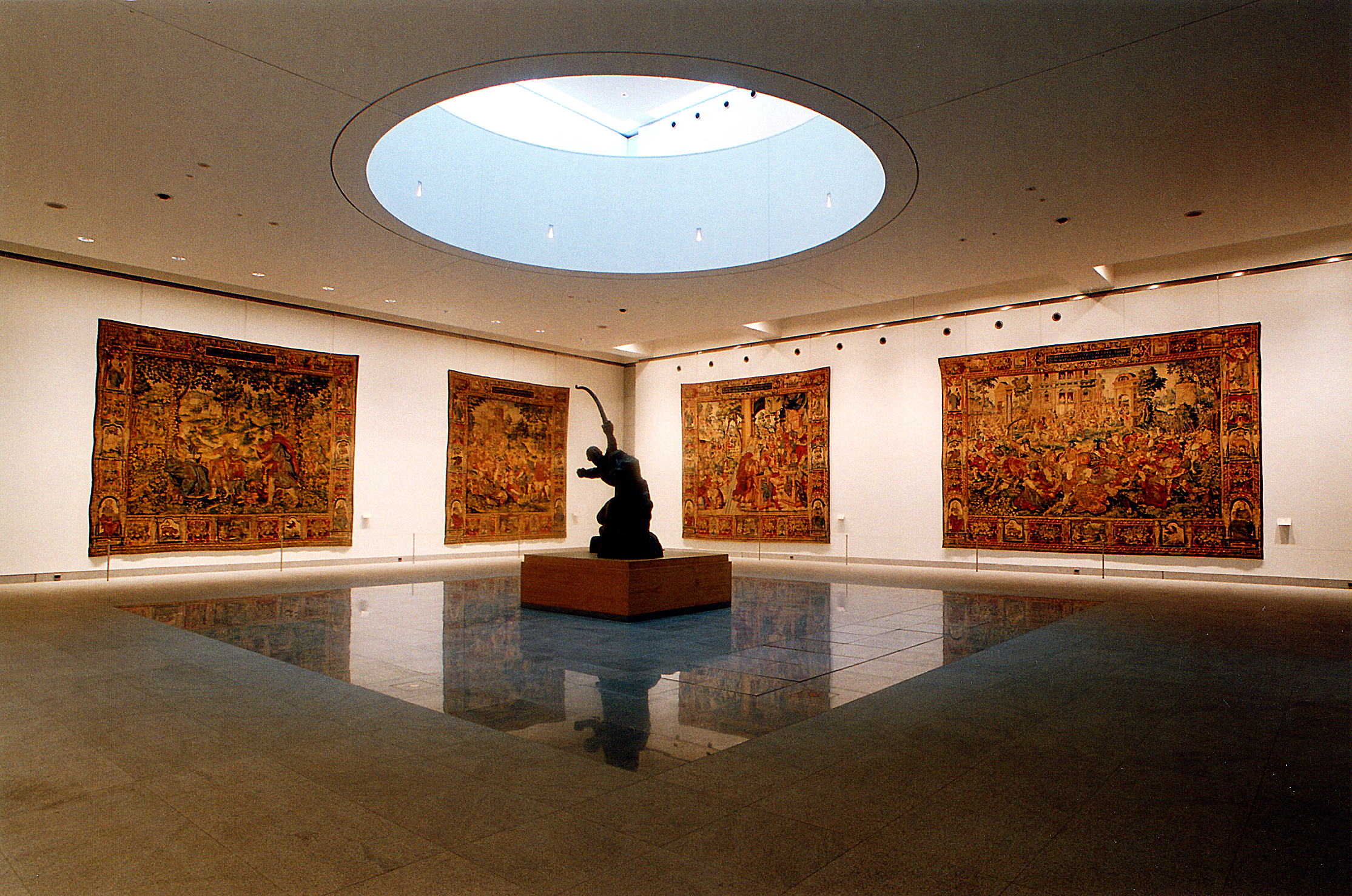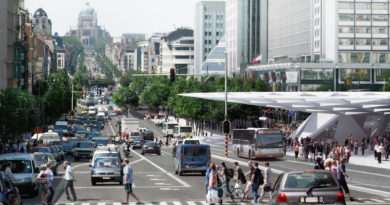7 infrastructure projects in Brussels taking forever to finish
Rome wasn’t built in a day. Neither was it rebuilt in just a few weeks after the great fire that destroyed the city in 64 AD.
In any part of the world, construction and renovation projects can take years or even decades to finish. Such projects are undertaken in several phases that require major government funding. And project costs go up as time goes by.
And then there’s the problem of political drive which can dry up just as fast as the state’s coffers. While politicians love to commit to long-term projects which give them one foot in the next election, in reality, they tend to prioritize short-term projects. The credit will be theirs for every project completed within their term.
As a result, long-term or time-consuming projects are often delayed or postponed. Incumbent governments are less inclined to favor projects that probably won’t end up on their list of accomplishments. This creates a vicious cycle of passing on unfinished projects from one government to another.
There can be a number of other factors contributing to project delays depending on the political situation in a country. In Belgium, for instance, the constant power struggle between the Flemish and the Francophones may impact government decisions on which projects to prioritize.
Here are some classic examples of Brussels infrastructure projects that have been discussed for years yet haven’t seen the full light of day.

1 . Construction of the Brussels Regional Express Network (RER/GEN)
Management: INFRABEL
Plans to build an advanced transit system providing fast and frequent links to and from Brussels began in the 1990’s. Since many employees in Brussels come from outside the city, the Réseau Express Régional Bruxellois (RER) or Gewestelijk ExpressNet (GEN) project was conceived as a way to improve mobility within a 30-kilometer radius of the Belgian capital.
Constructions started in 2004 with the goal of making the service operational by 2012. However, the target for completion was moved several times from 2012 to 2019 to 2020, and now, to 2025. The 2.2 billion euro-project requires building a tunnel between Schuman and Josaphat, the redirection of 28 existing stations in Brussels, and the demolition and reconstruction of bridges getting in the way of the overall track.
The initial RER/GEN network started operating 12 lines across 120 stations in December 2015. But the project hasn’t reached its target frequency of at least one departure per 15 minutes. Until now, the train services still run only once or twice per hour. More than a dozen constructions have yet to be finished for the entire network to be operational.

2. Renovation of the Palais de Justice
Management: Régie des Bâtiments, Federal Public Service Justice
Belgium’s most important courthouse has been buried in scaffolding for more than three decades. The 135-year-old architectural masterpiece has been in dire need of repair even longer than that. The building, which is falling apart and infected with fungus, has become a safety threat to court employees and visitors.
In 1983, the first layer of scaffolding was installed to hold the palace together and protect the public from falling debris. But the work of repairing the building’s roof and walls didn’t begin until 2003. About ten years later, the scaffolding itself required repair and reinforcement.
In 2016, the Belgian government said the palace will be fully renovated and the scaffoldings will be removed by 2028. But this year, it was announced that the renovation project, which would cost up to 100 million euros, will not be completed before 2040.

3. Construction and renovation of prison facilities
Management: Régie des Bâtiments, Federal Public Service Justice
For years, international human rights organizations have questioned the inhumane conditions in overcrowded and dilapidated jail facilities in Belgium. In 2008, the Belgian government finally came up with a masterplan to build new prisons and renovate existing ones to produce more than 2,200 additional spaces for prisoners.
The masterplan has so far delivered several results, including the rehabilitation of the prison facilities in Saint-Gilles and Forest in the Brussels-Capital Region, and the construction and expansion of other prisons in the Wallonia and Flanders regions. However, overcrowding and poor living conditions remain a problem in many prison facilities.
After two masterplans, the government introduced a third masterplan in 2016. Part of the program was to finally launch the long-delayed and much-discussed project to build a mega-prison in the Haren district of Brussels City. The 15-hectare prison complex would replace the ageing jail facilities in Saint-Gilles, Forest, and Berkendael.
The first phase of construction began in July this year amid protests from Haren residents who fear that the mega-prison will disrupt life in their small community. The completion of the project, which could cost up to 1.2 billion euros, is expected in 2022.

4. Restoration of the Royal Conservatory of Brussels
Management: Beliris, Flemish Community, French Community
Brussels’ Royal Conservatory of Music was officially established in 1832. The building it occupies along Rue de la Régence was completed in 1876. Sometime in the 1980’s, the old building started presenting signs of deterioration.
Discussions on renovating the building have been going on since the last decade. But no significant action was undertaken, save for occasional minor repairs and the installment of scaffoldings to support the building.
After a long wait, the government finally announced this month that a comprehensive renovation of the conservatory building will begin in 2023 with a budget of 60 million euros. For now, studies are being conducted to formulate a global plan for the restoration project.

5. Renovation of Parc du Cinquantenaire museums and triumphal arch
Management: Régie des Bâtiments, Beliris
The central building of Parc du Cinquantenaire was first developed in 1880. It currently houses the Royal Museum of the Armed Forces and Military History, the Art and History Museum, and Autoworld.
Renovations to the building began about 19 years ago with the reconstruction of the ceilings above the military history museum. In 2016, the Belgian government signed an agreement to address the appeal for urgent repairs to the rest of the building.
After two years of waiting, the government will roll out the first phase of renovation this October. Works will focus on restoring the roofs of the three museums. The later phases of the project scheduled next year until 2022 will involve improvements to the patio of the triumphal arch and various other sections of the building. Project costs are estimated at 21 million euros.

6. Renovation of the Royal Museums of Fine Arts of Belgium
Management: Régie des Bâtiments
The Royal Museums of Fine Arts in Brussels was created by Royal Decree in 1835. The establishment consists of six sections: the Oldmasters Museum, the Museum of Modern Art, the Magritte Museum, the Fin-de-Siècle Museum, the Constantin Meunier Museum, and the Antoine Wiertz Museum.
The Royal Museums’ main building in the Royal District is now 131 years old. And like any ancient building, it has become prone to roof leaks and other structural damages. For years, appeals have been made to rehabilitate the historic building.
In 2016, the government pledged to invest 145 million euros in a large-scale renovation of major museums in Brussels, including the Royal Museums of Fine Arts. The project was supposed to be completed by 2018, but so far, no definite and permanent plan has been put in place.

7. Redevelopment of the Gare du Midi neighborhood
Management: Brussels Regional Government, SNCB
The redevelopment of the Gare du Midi district is perhaps one of the most sensitive and problematic development projects in Brussels. The troubles of the district date back to the 1990s when the Eurostar terminal was added to the Brussels-South railway station or Gare du Midi. This turn of events triggered a wave of urban development in the area surrounding the station.
More than a hundred homes had to be expropriated to make way for the creation of office towers around the station. The messy process of relocating and compensating the displaced inhabitants dragged on from 1992 until 2006. With all the focus on building an economic district, the residential aspects of the neighborhood were neglected. Housing was insufficient, mobility was a problem, and residents were leaving.
In 2007, the regional government unveiled the Brussels International Development Plan which included the redevelopment of the Gare du Midi district. Several improvements were made in the neighborhood, including the construction of new residential buildings and the rehabilitation of old streets.
But progress proved difficult to sustain due to conflicts between the various actors involved in the project. First, there is the commune of Saint-Gilles to which the Gare du Midi district belongs. Another major actor is the SNCB or the Belgian National Railway Corporation which owns the Brussels-South railway station and about 30 percent of properties in the district. Third, you have the Brussels Regional Government at the helm of neighborhood development projects. And lastly, the private stakeholders.
The regional government has released two development masterplans for the Gare du Midi district, one in 2011 and another in 2016. This time the goal is to reinforce the residential character of the district. However, the success of the project is largely contingent on the agreement among the different parties involved, and the cooperation of the SNCB which commands a sizeable part of the neighborhood.



